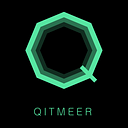Exploring ERC-1155: From Static to Dynamic NFTs
NFTs are unique cryptographic assets on the blockchain, typically created using specific standards (such as ERC-721 and ERC-1155) to ensure each NFT has a unique token ID.
In the Ethereum protocol, ERC-20 is the standard for fungible tokens, while ERC-721 is the standard for non-fungible tokens.
ERC-1155 combines the advantages of both, being semi-fungible and allowing modifications when necessary. Unlike static ERC-721 NFTs, dynamic ERC-1155 NFTs can have their metadata changed and visually translated.
Let’s take a closer look at these two types of NFTs:
Static ERC-721 NFTs
ERC-721 is a static NFT protocol commonly used for crypto collectibles and NFT art, as well as digitizing real-world assets like passports, certificates, and real estate deeds.
ERC-721 NFTs contain permanent and immutable token data at creation, meaning the information cannot be changed. Thus, regardless of changes in the external environment, they remain the same, which can lead to outdated information over time.
Dynamic ERC-1155 NFTs
ERC-1155 NFTs overcome the limitations of ERC-721. While the token ID remains the same, the metadata can change under specific conditions, making them dynamic. Each ERC-1155 NFT includes metadata that describes its characteristics, which can update based on conditions to reflect current information.
For example, the metadata of a game NFT might include attributes like strength or stamina; for NFT art, this could include the colors or accessories of the artwork. You might have heard of the Ethereum-based game CryptoKitties.
CryptoKitties, launched in 2017, is a blockchain game where players can collect, breed, and trade virtual cats as dynamic NFTs. It is one of the earliest projects based on ERC-1155 NFTs.
How Do ERC-1155 NFTs Work?
- Minted by smart contracts, containing a set of metadata.
- Smart contracts obtain external data from oracles, such as IoT data and APIs.
- Based on oracle data, the smart contract evaluates the NFT and encodes changes during the minting process.
- The NFT’s characteristics update when necessary.
Applications of ERC-1155 NFTs
- Identity Verification:
When blockchain-based identity becomes a reality, ERC-1155 NFTs can represent digital IDs or passports, automatically updating information without needing to replace the document, including details like residence, marital status, and contact information.
- Gaming:
ERC-1155 is commonly used in NFT games, allowing players to use dynamic NFTs to represent their characters. As characters gain experience, their attributes change, enhancing the gaming experience. Dynamic NFTs enable the concept of progress in games and support interactive experiences requiring external data.
- Virtual Real Estate:
Although real estate tokenization has existed for some time, static ERC-721 NFTs cannot reflect changing factors. Dynamic ERC-1155 NFTs can capture more details and flexibly update information, such as property prices, age, and ownership.
- Art:
Inspired by the Japanese aesthetic of “wabi-sabi” ,which emphasizes transience and impermanence, dynamic ERC-1155 NFTs can reflect changes in artwork in real-time, such as altering based on weather or seasons. This capability allows digital artists to encode the concept of impermanence into their works, making the art more unique.
Conclusion
ERC-1155 NFTs are “smarter” than static ERC-721 NFTs because they can dynamically adapt and reflect external information in real-time. Beyond the applications mentioned, ERC-1155 NFTs have countless potential use cases, easily meeting the need for NFT modifications.
